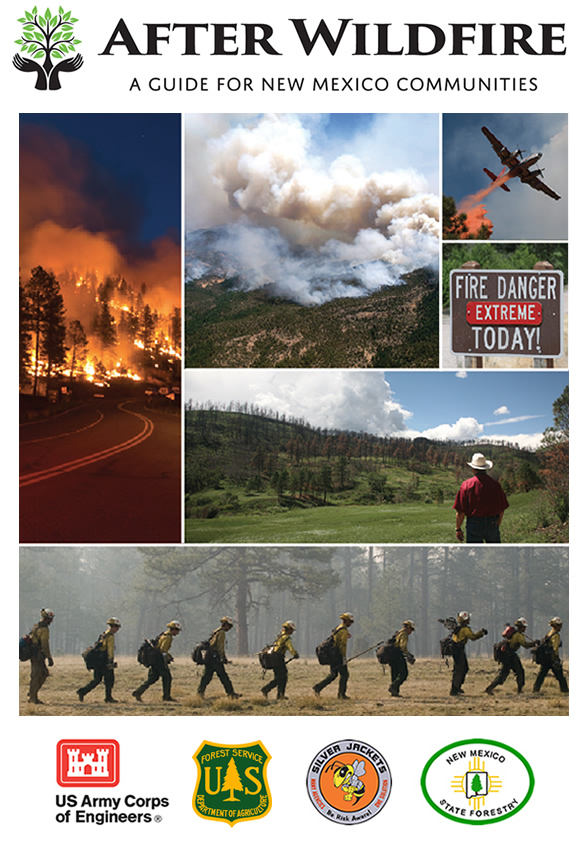
Who Can Help?
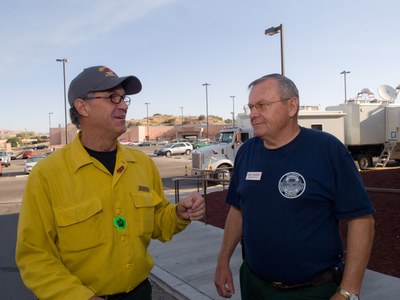 This section describes many of the programs and services provided by agencies and non-profits.
This section describes many of the programs and services provided by agencies and non-profits.
Please note that programs and funding levels can change from year to year, and assistance may not always be available.
When large wildfires affect an entire community, there are usually public meetings to provide current information on services and programs available. You may also find additional assistance from community volunteers and local organizations that are not included here.
Assistance for Communities
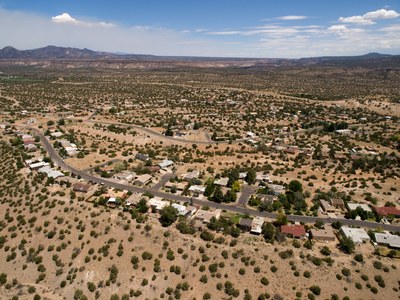
Since post-fire flooding is a real threat in New Mexico, you need to immediately assess the risk that flash flooding poses. Your first task is to identify what funds are available in the community for immediate use, and to prioritize projects that will provide the most expedient protection with those funds.
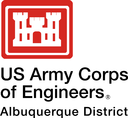 Continuing Authorities Program: US Army Corps of Engineers
Continuing Authorities Program: US Army Corps of Engineers
This fund is for relatively small projects dealing with floodplain management, flood control, ecosystem restoration, erosion control and stream bank protection. This program is broad, including activities such as stream bank erosion protection, modifications to existing infrastructure, and more. It is funded by Congress.
 Emergency Flood Protection: US Army Corps of Engineers
Emergency Flood Protection: US Army Corps of Engineers
The US Army Corps of Engineers can provide emergency assistance during flood events. USACE emergency assistance is intended, by law, to be temporary in order to meet immediate threats. Through this program, USACE can provide technical assistance to State and local governments with regard to emergency preparedness and planning activities. Assistance is intended to develop contingency plans, evacuation plans, and exercises to lend expertise in both areas.
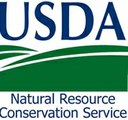 Emergency Watershed Protection: Natural Resources Conservation Service
Emergency Watershed Protection: Natural Resources Conservation Service
The Emergency Watershed Protection (EWP) program provides technical and financial assistance to safeguard people and property following natural disasters, such as floods, fires, wind storms, earthquakes, and drought.
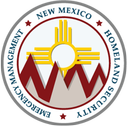 Flood Risk Evaluation Prior to Flooding: NM Department of Homeland Security and Emergency Management
Flood Risk Evaluation Prior to Flooding: NM Department of Homeland Security and Emergency Management
This program's goals are to reduce flood risk prior to an event, and partners with Federal and non-Federal partners to provide hazard information, technical services, and planning guidance free of charge to qualified communities and Tribal governments.
 Hazard Mitigation Grant Program: NM Department of Homeland Security and Emergency Management
Hazard Mitigation Grant Program: NM Department of Homeland Security and Emergency Management
The New Mexico Department of Homeland Security and Emergency Management (NMDHSEM) is a resource for communities after the Governor has issued a State of Emergency, or after a Presidential Disaster Declaration or a Fire Management Assistance Grant (FMAG) declaration . The purpose of the program is to implement long-term hazard mitigation measures. DHSEM may also have information on other programs and resources available to your community after a wildfire.
 Permanent Flood Protection Solutions: US Army Corps of Engineers
Permanent Flood Protection Solutions: US Army Corps of Engineers
The US Army Corps of Engineers has the authority to construct large-scale flood risk management (FRM) projects, including dams and engineered levees, through the Civil Works Program. Smaller-scale projects may be constructed through the Corps' Continuing Authorities Program.
 Tribal Partnership Program: US Army Corps of Engineers)
Tribal Partnership Program: US Army Corps of Engineers)
This program enables the US Army Corps of Engineers to assist on a reconnaissance study of various water resources and related issues with Pueblos and Tribes. Examples of topics include flood damage reduction, environmental restoration and protection, watershed planning, and cultural resources studies.
 Regulatory Program Authority: US Army Corps of Engineers
Regulatory Program Authority: US Army Corps of Engineers
The US Army Corps of Engineers (USACE) can assist with permitting after a wildfire has occurred. A permit is required from the USACE for activities involving discharge of fill or dredged materials into bodies of water in the US. Dredged material includes the redistribution of rocks, gravel and sediments already in the stream, lake, pond, wetland, etc.
 Soil and Water Conservation Districts
Soil and Water Conservation Districts
Your local Soil and Water Conservation District (SWCD) may be able to provide help after a wildfire or natural disaster. For a listing of your SWCDs, visit the New Mexico Association of Conservation Districts (NMACD) website or call them at (575) 361-1413. For a list of districts and phone numbers, click here.
 New Mexico Environment Department: Ground Water Quality Bureau
New Mexico Environment Department: Ground Water Quality Bureau
The Ground Water Quality Bureau protects New Mexico’s groundwater resources as mandated by the Water Quality Act and the New Mexico Ground and Surface Water Protection Regulations (20.6 NMAC) and identifies, investigates, and cleans up contaminated sites to protect human health and the environment.
US Army Corps of Engineers: Continuing Authorities Program (CAP)
What are the Program Objectives? Several authorities come under the CAP program. Some of the most relevant ones are listed below.
1) Aquatic Ecosystem Restoration, (Section 206): Improves and restores aquatic ecosystems in a cost-effective manner to improve the environment and add value to the public. The Reconnaissance phase is at 100% Federal expense. The Feasibility phase is cost shared 50/50. Construction is cost shared 65% Federal and 35% Non-Federal. It has been used extensively by Tribes to restore the Bosque along the Rio Grande.
Click here for an information sheet about Section 206, including a sample request for assistance.
2) Emergency Stream bank and Shoreline Erosion Protection (Section 14): Provides emergency stream bank and shoreline protection to prevent damage to public facilities such as roads, bridges, hospitals, schools and water treatment plants.
Click here for an information sheet about Section 14, including a sample request for assistance.
3) Flood Risk Management (Section 205): Modifications to existing infrastructure to provide protection from frequent or recurring flooding; planning and construction of flood control works such as levees, channels and dams.
Click here for an information sheet about Section 205, including a sample request for assistance.
Click here for an information sheet about Section 204, including a sample request for assistance.
Click here for an information sheet about Section 1135, including a sample request for assistance.
Who Can Apply? USACE resources can only be requested by a State Emergency Management Agency or by Tribal governments, and can only occur once State, Tribal and local governments have committed all available resources (i.e., workforce, supplies, equipment, funds, National Guard assets, etc.). However, assistance can be requested at anytime.
Are Matching Funds Required? Yes, projects are cost shared and require no further congressional authorization to proceed to construction.
When can assistance be requested? Assistance can be requested at anytime.
When Can I Expect To Receive My Funds? Funds are allocated based on the available national budget and allocated based on assigned rank at USACE Headquarters.
Contact Name: CrystalLin Medrano
Contact Phone Number: (505) 342-3686
Contact Email: cespa-eoc@usace.army.mil
NMDHSEM Hazard Mitigation Grant Program
What is it? The New Mexico Department of Homeland Security and Emergency Management (NMDHSEM) administers the Hazard Mitigation Grant Program (HMGP) utilizing FEMA funding. HMGP provides grants to local governments, tribal entities and State agencies to implement long-term hazard mitigation measures. The purpose of HMGP is to reduce the loss of life and property due to natural disasters and to enable mitigation measures to be implemented during the immediate recovery from a disaster. HMGP is authorized under Section 404 of the Robert T. Stafford Disaster Relief and Emergency Assistance Act, Title 42, United States Code 5170c.
Who Can Apply? Local governments and tribal entities with a FEMA approved Hazard Mitigation Plan. This program can only be applied for after a Presidential disaster declaration or a Fire Management Assistance Grant (FMAG) declaration.
Are Matching Funds Required? Yes, 25% of the funds must come from a non-federal source.
Program Website: https://www.nmdhsem.org/administrative-services-bureau/administrative-services-bureau-grants/hazard-mitigation-grant-program-hmgp/
Department Website: www.nmdhsem.org
Emergency Watershed Protection
What is it? Through EWP, NRCS reduces the threat to life and property by providing assistance to prevent further damage from flooding, runoff, and erosion. EWP work may include repairing existing water controls (i.e., levees, dikes, or other flood control structures), and removing debris and sediment from watercourses to prevent further damage in the event of subsequent storms.
Who Can Apply? Communities. The EWP must be sponsored by a public entity such as a qualified tribal organization, a division of state government, a city, county or special district (irrigation, conservation, etc.). An eligible entity must apply within 60 days of the event which caused the impairment. The 60 day "clock" generally starts when the event starts.
Are Matching Funds Required? Yes. The NRCS will pay up to 75% of construction costs of eligible emergency treatments.
When Can I Expect To Receive My Funds?: Timing of funding depends on the availability of funds in the program at the national level. If an eligible sponsor has matching funds available, EWP funds are available (nationally), and NRCS determines that a specific situation falls under the "exigency" authorities (generally requiring immediate action to reduce a threat to human life as well as other program eligibility considerations), funding can occur within days.
Contact Name: Kenny Branch, EWP Program Coordinator or Kristin Graham Chavez, Assistant State Conservationist for Programs
Kenny Branch Phone Number: (505) 761-4454
Kristin Graham Chavez Phone Number: (505) 761-4404
Contact Email: Click here to find your NRCS Area Office contact information
Program Website: http://www.nrcs.usda.gov/wps/portal/nrcs/main/nm/programs/financial/ewp/
US Army Corps of Engineers: Emergency Flood Protection
What is it? Under Public Law 84-99, USACE can provide emergency assistance during flood events. USACE emergency assistance is intended, by law, to be temporary in order to meet immediate threats. USACE can provide technical assistance to State and local governments with regard to emergency preparedness and planning activities. Assistance is intended for State and local agencies to develop contingency plans, evacuation plans, and exercises to lend expertise in both areas.
Post-Flood Response: Following a flood event, but prior to a Presidential declaration pursuant to the Stafford Act, USACE may provide Post-Flood Response assistance. Post-Flood Response activities are limited to actions necessary to save lives and protect public facilities, and residential or commercial developments. Post-Flood Response assistance by USACE can include clearance of debris from transportation routes, critical infrastructure, and water courses when it is required to prevent loss of life or significant damage to public property. A written request for Post-Flood Response from the Governor of a State to the USACE District Commander must be provided concurrently with or immediately after the Governor's request for a Presidential disaster declaration under the Stafford Act. This request must indicate that the recovery work is beyond the capability of the State to accomplish; identify specific damage locations; and detail specific requirements for USACE assistance. USACE assistance may be provided for a maximum of ten (10) days from the date of receipt of the Governor’s request for assistance. No work, including contract work, can be performed after the 10-day period expires. No work can be initiated if a Presidential declaration request is denied.
Advance Measures: USACE may build Advance Measures flood damage reduction projects on a case-by-case basis. Specific areas that have been impacted by forest fires leaving denuded terrains will be considered based on National Weather Service forecasted rainfall models and expected impacts to life and improved property. USACE may perform Advance Measures prior to flooding or flood fighting activities to protect against and mitigate loss of life and significant damages to urban areas, public facilities, and/or critical infrastructure. Advance Measures must be in response to an “imminent threat of unusual flooding” with the potential to approach an area's flood of record, a catastrophic level of flooding, or a greater than 50-year level of flooding. Activities are limited to the protection of life and the protection of public facilities/infrastructure in imminent danger of flooding, and the law specifically excludes assistance to individual homeowners and businesses, including agricultural property.
Who Can Apply? USACE resources can only be requested by a State Emergency Management Agency or by Tribal governments, and can only occur once State, Tribal and local governments have committed all available resources (i.e., workforce, supplies, equipment, funds, National Guard assets, etc.).
When Can I Expect To Receive My Funds?: Funding availability is subject to the budget cycle.
Contact Name: CrystalLin Medrano
Contact Phone Number: (505) 342-3686
Contact Email: cespa-eoc@usace.army.mil
NMDHSEM Flood Risk Evaluation Prior To Flooding
What is it? The New Mexico Department of Homeland Security and Emergency Management (NMDHSEM) administers the Flood Mitigation Assistance Grant Program (FMA) utilizing FEMA funding. FMA provides grants to local governments, tribes and State agencies on an annual basis to mitigate flood damaged properties and to reduce or eliminate claims under the National Flood Insurance Program. FMA is authorized under Section 1366 of the National
Flood Insurance Act of 1968, as amended, Title 42, United States Code, 4104c.
Who Can Apply? Local governments and tribal entities with a FEMA approved Hazard Mitigation Plan. This program can only be applied for during the annual cycle and must mitigate flood risk for structures insured through the National Flood Insurance Program.
Are Matching Funds Required? Yes, 25% of the funds must come from a non-federal source.
Program Website: www.nmdhsem.org/Grants.aspx
Department Website: www.nmdhsem.org
USACE Permanent Flood Protection Solutions
What is it? USACE has the authority to construct large-scale flood risk management (FRM) projects, including dams and engineered levees, through the Civil Works Program. Smaller-scale FRM projects may be constructed through the Corps' Continuing Authorities Program. Section 205 of the Flood Control Act of 1948 provides authority to construct FRM projects with up to a $7 million Federal cost.
Who Can Apply? USACE resources can only be requested by a State Emergency Management Agency or by Tribal governments, and can only occur once State, Tribal and local governments have committed all available resources (i.e., workforce, supplies, equipment, funds, National Guard assets, etc.).
Are Matching Funds Required? Yes, these projects are cost-shared 65/35 Federal/non-Federal. FRM projects are cost-shared and require a non-Federal sponsor. Cost-sharing varies from feasibility phase (50/50 Fed/non-Fed) to construction phase (65/35 Fed/non-Fed). However, Assistance can be requested at anytime.
When Can I Expect To Receive My Funds?: Funding availability is subject to the budget cycle.
Contact Name: CrystalLin Medrano
Contact Phone Number: (505) 342-3686
Contact Email: cespa-eoc@usace.army.mil
USACE Regulatory Program Authority
What is it? Under Section 404 of the Clean Water Act a permit is required from the USACE for activities involving discharge of fill or dredged materials into waters of the United States (WOUS). This requirement is not waived in emergency situations. USACE regulations at 33 CFR 325.2(e)(4) define an emergency as a situation that “…would result in an unacceptable hazard to life, a significant loss of property or an immediate, unforeseen and significant economic hardship…”Projects associated with emergency and disaster response situations will receive priority review and expedited response. Potential responses include informing the applicant that a permit is not required for the proposed work, that the project meets the terms and conditions of an issued general permit, or that an individual permit is required.
Who Can Apply? Any party proposing to discharge fill or dredged material into a WOUS. Applications may be submitted at anytime.
Contact Name: CrystalLin Medrano
Contact Phone Number: (505) 342-3686
Contact Email: cespa-eoc@usace.army.mil
Program Website: http://www.spa.usace.army.mil/Missions/RegulatoryProgramandPermits.aspx
Frequently Asked Questions about USACE Permits in an Emergency Situation:
Click here.
Pueblos and Tribes: USACE Tribal Partnership Program
What is it? This is a study authority that enables the Corps to spend up to 100K on a reconnaissance study of various water resources and related issues. Specified topics include flood damage reduction, environmental restoration and protection, watershed planning, cultural resources studies, and “such other projects as the Secretary determines to be appropriate,” thus opening the door to many potential kinds of study. Additionally, there are individual authorities for specific projects or programs that are included in Water Resources Development Act (WRDA) laws by Congress as a result of requests from constituents. Some of these apply exclusively to Tribes.
Who Can Apply? USACE resources through this program can only be requested by Tribal governments, and can only occur once Tribal and local governments have committed all available resources (i.e., workforce, supplies, funds, etc.). Assistance can be requested anytime.
Are Matching Funds Required? Yes, if a Federal interest is identified during the reconnaissance phase, a feasibility or watershed assessment cost-share agreement is signed and the project moves into the next phase. Typically, the cost share is 50/50 and in-kind contributions are allowed; watershed planning, however, is cost-shared 75/25. The Bureau of Indian Affairs must be contacted during the course of a study.
When can assistance be requested?
Assistance can be requested at anytime.
When Can I Expect To Receive My Funds?
Funds are allocated based on the available national budget and allocated based on assigned rank at USACE Headquarters.
Contact Information:
Contact Name: Ronald Kneebone
Phone Number: 505-342-3355 or the main line at 505-342-3100
Email: Ronald.R.Kneebone@usace.army.mil
Tribal Partnership Program (Section 203)
What is it? This is a study authority that enables the Corps to spend up to 100K on a reconnaissance study of various water resources and related issues. Specified topics include flood damage reduction, environmental restoration and protection, watershed planning, cultural resources studies, and “such other projects as the Secretary determines to be appropriate,” thus opening the door to many potential kinds of study. Additionally, there are individual authorities for specific projects or programs that are included in WRDA’s by Congress as a result of requests from constituents. Some of these apply exclusively to Tribes.
Who Can Apply? USACE resources can only be requested by a State Emergency Management Agency or by Tribal governments, and can only occur once State, Tribal and local governments have committed all available resources (i.e., workforce, supplies, equipment, funds, National Guard assets, etc.). Assistance can be requested at anytime.
Are Matching Funds Required? Yes, if a Federal interest is identified during the reconnaissance phase, a feasibility or watershed assessment cost-share agreement is signed and the project moves into the next phase. Typically, the cost share is 50/50 and in-kind contributions are allowed watershed planning, however, is cost-shared 75/25. The Bureau of Indian Affairs must be contacted during the course of a study.
When Can I Expect To Receive My Funds? Funds are allocated based on the available national budget and allocated based on assigned rank at USACE Headquarters.
NMED Surface Water Quality Bureau
WHAT CAN THE NEW MEXICO ENVIRONMENT DEPARTMENT (NMED) PROVIDE?
For communities, NMED can provide free testing of private domestic wells for individual private well owners through the Water Fair Program to check for contamination after a wildfire. Contact the Ground Water Quality Bureau for more information: gwqb.general@state.nm.us or (505) 827-2900. GWQB home page: https://www.env.nm.gov/gwqb/
For inquiries related to surface water quality, the Surface Water Quality Bureau (SWQB) can provide support. Contact Abraham Franklin, SWQB Watershed Protection Section Manager, at abraham.franklin@state.nm.us or (505) 946-8952. SWQB-WPS home page: https://www.env.nm.gov/surface-water-quality/watershed-protection-section/
For more information on Surface Water Quality:
New Mexico Livestock Board
During a wildfire, the health and safety of livestock is primarily the responsibility of the owner. However, the New Mexico Livestock Board can provide various kinds of assistance. To learn more about how they can help, contact them directly at 505-841-6161 or click here to visit our "Caring for Your Pets and Livestock" page.
Soil and Water Conservation Districts
For a listing of your SWCDs, visit the New Mexico Association of Conservation Districts (NMACD) website or call them at (575) 981-2400. You may also contact the New Mexico Coalition of Conservation Districts (NMCCD) or call them at 505-832-1111 .
For a list of districts and phone numbers, click here.
Emergency Funds and Vecino Fund
What is it? The NMCF provides emergency funds that are a conduit to receive philanthropic donations to help those most in need. For example, the NMCF set up a fund for Santa Clara Pueblo after the Las Conchas wildfire. In the summer of 2013, the NMCF set up a disaster relief fund due to wildfires around New Mexico. 100% of all donations go to those effected by natural disasters or fires.
Who Can Apply? Non-profit organizations and government entities. The NMCF does not give funds to individuals. Funds can be applied for immediately after a fire or during a fire.
Are Matching Funds Required? No.
When Can I Expect To Receive My Funds? If approved, a few days after the application has been submitted.
Contact Name: Linda Milbourn
Contact Phone Number: 505-820-6860
Program Website: nmcf.org.
Click here to learn more about the Vecino Fund.
NMDHSEM Pre-Disaster Mitigation Grant
|
What is it? The New Mexico Department of Homeland Security and Emergency Management (NMDHSEM) administers the Pre-disaster Mitigation Grant Program (PDM) utilizing FEMA funding. The PDM provides grants to local governments, tribes and State agencies on an annual basis for hazard mitigation measures that reduce or eliminate overall risk from natural hazards. The purpose of the PDM is to reduce the loss of life and property due to natural disasters and to enable mitigation measures to be implemented before the next natural disaster strikes. PDM is authorized under Section 203 of the Robert T. Stafford Disaster Relief and Emergency Assistance Act, Title 42, United States Code 5133. Who Can Apply? Local governments and tribal entities with a FEMA approved Hazard Mitigation Plan. This program can only be applied for during the annual cycle. Are Matching Funds Required? Yes, 25% of the funds must come from a non-federal source. Program Website: www.nmdhsem.org/Grants.aspx Department Website: www.nmdhsem.org |
NMDHSEM Flood Mitigation Assistance Grant
What is it? The New Mexico Department of Homeland Security and Emergency Management (NMDHSEM) administers the Flood Mitigation Assistance Grant Program (FMA) utilizing FEMA funding. FMA provides grants to local governments, tribes and State agencies on an annual basis to mitigate flood damaged properties and to reduce or eliminate claims under the National Flood Insurance Program. FMA is authorized under Section 1366 of the National
Flood Insurance Act of 1968, as amended, Title 42, United States Code, 4104c.
Who Can Apply? Local governments and tribal entities with a FEMA approved Hazard Mitigation Plan. This program can only be applied for during the annual cycle and must mitigate flood risk for structures insured through the National Flood Insurance Program.
Are Matching Funds Required? Yes, 25% of the funds must come from a non-federal source.
Program Website: www.nmdhsem.org/Grants.aspx
Department Website: www.nmdhsem.org
USGS Debris Flow Modeling
USGS works on a cooperative basis with local, State, and Tribal agencies on programs that enhance their mission, which is to understand the water resources of the Nation. They provide water-resources data to agencies to help them manage their water-resources issues. USGS also works as consultants to other Federal agencies; if an agency would like to partner with the USGS on any water-related problem, including real-time alert streamgages and precipitation gages, call the number below.
For more information, call (505) 830-7905 or visit the USGS Water Resources of New Mexico site here.
Assistance for Individuals and Families
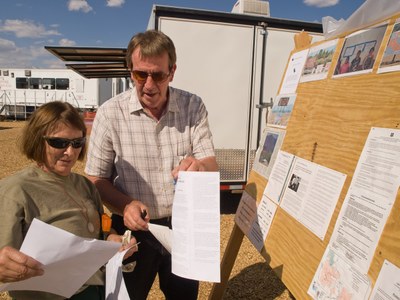
Assistance for individuals may be more limited than assistance to communities. In addition to these resources, you may find help from community volunteers and local organizations not included here, such as churches, community centers and local businesses. Local help can often mobilize quickly to provide services such as sheltering livestock or pets, providing household supplies to fire victims, and meeting other needs not met by the major agencies and organizations.
2022 Wildfire Information - New Mexico Department of Homeland Security
There are many current, helpful resources on this page including information and permits for the Full Service Debris Removal Program. This program allows all wildfire debris on residential properties within Mora and San Miguel Counties ro be collected, safely removed, and properly disposed of by the U.S. Environmental Protection Agency and the U.S. Army Corps of Engineers with no out of pocket costs to property owners.
U.S. Forest Service Claimants Helpdesk (877) 372-7248
 American Red Cross
American Red Cross
The American Red Cross responds to disasters 365 days a year and can assist impacted individuals with their immediate emergency needs. Call 1-800-RED CROSS (1-800-733-2767) and ask for your local chapter.
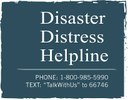 Disaster Distress Helpline
Disaster Distress Helpline
The Disaster Distress Helpline can assist you after a wildfire. Those impacted by recent wildfires can reach out to them any time for support. Call 1-800-985-5990, para español, oprima el dos, or text Text TalkWithUs to 66746 or Hablanos to 66746.
 Farm Service Agency: Assistance with Natural Disaster Loses
Farm Service Agency: Assistance with Natural Disaster Loses
The Farm Service Agency provides assistance for natural disaster losses, resulting from drought, flood, fire, freeze, tornadoes, pest infestation, and other calamities. For example, they provide assistance after a disaster to eligible livestock producers, honeybee producers, orchardists, forestland owners, tree nurseries and more. More information
 Food Assistance
Food Assistance
The SNAP (Supplemental Nutrition Assistance Program) may help you replace food lost in a disaster or help you apply for benefits. More information
 Help for Businesses and Non-Profits: Small Business Administration
Help for Businesses and Non-Profits: Small Business Administration
If your business or private, nonprofit organization has suffered physical damage or your small business or private, nonprofit organization of any size has sustained economic injury after a disaster, you may be eligible for financial assistance.
 Help for Renters and Homeowners: Small Business Administration
Help for Renters and Homeowners: Small Business Administration
The Small Business Administration provides low-interest disaster loans with long-term repayments to qualifying individuals and businesses.
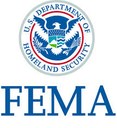 Helping Children Cope with Disaster
Helping Children Cope with Disaster
Disasters can be especially stressful for families with children. FEMA (the Federal Emergency Management Agency) and Sesame Street provide resources to assist you in helping children cope with disaster.
 New Mexico Burned Area Initiative: Natural Resources Conservation Service
New Mexico Burned Area Initiative: Natural Resources Conservation Service
The NRCS NM Burned Area Initiative is part of the their Environmental Quality Incentives Program (EQIP). The Burned Area Initiative is designed to help landowners restore conservation practices destroyed in fires or by off-site fire impacts. All EQIP programs have a continuous sign-up period.
 New Mexico Department of Homeland Security and Emergency Management
New Mexico Department of Homeland Security and Emergency Management
The NMDHSEM offers assistance to communities rather than at the individual level. However, individuals seeking advice after a wildfire can call the New Mexico Department of Homeland Security’s Public Information Officer at 505-476-0626 or the main line at 505-476-9600.
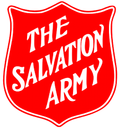 The Salvation Army
The Salvation Army
The Salvation Army may provide temporary assistance for families in need, including vouchers for rent and emergency aid and legal aid. For information on services provided by The Salvation Army, click here. For Salvation Army locations and phone numbers in New Mexico, click here.
Southern Baptist Disaster Relief
SBDR is a Christian organization that aims to meet the urgent needs of hurting humanity in crisis situations. They provide many different types of relief, including food, water, child care, laundry, repairs, rebuilding and more. For example, they provided direct assistance in New Mexico after destructive wildfires such as removing debris from burned home sites. Southern Baptist Disaster Relief has gained national and international recognition for service in crisis situations across the nation and the globe.
Self Help
Each year, through grants and private and public contributions, Self Help is able to support those who need help most during emergencies to the residents of Los Alamos, northern Santa Fe, Rio Arriba, and Taos counties. More information
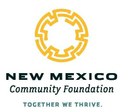 Vecino Fund
Vecino Fund
New Mexico Community Foundation’s Vecino Fund provides “neighbor helping neighbor” funds for individuals in times of crisis, including after a wildfire. While NMCF does not give money directly to individuals, it provides financial assistance to agencies and organizations to purchase needed supplies and services to then assist individuals. To learn more about the Vecino Fund call 505-820-6860.
 Water Quality and Safety: Private Well Testing
Water Quality and Safety: Private Well Testing
The New Mexico Environmental Department (NMED) provides free testing of private domestic wells to check for contamination after a wildfire.
2-1-1 Free Information and Referral Center
While 2-1-1 is not specific to post-wildfire situations, it is a regional free Information and Referral Center connecting residents to community resources located in their area. 2-1-1 has several regions in New Mexico.
Disaster Distress Helpline
The Disaster Distress Helpline can assist you after a wildfire. Those impacted by recent wildfires can reach out to them any time for support. Call 1-800-985-5990, or text Text TalkWithUs to 66746 or Hablanos to 66746.
Vecino Fund
While NMCF does not give money directly to individuals, it provides financial assistance to agencies and organizations to purchase needed supplies and services to then assist individuals.
Click here to learn more about the Vecino Fund, or call 505-820-6860.
New Mexico Department of Homeland Security and Emergency Management
The NMDHSEM offers assistance to communities rather than at the individual level. However, individuals seeking advice after a wildfire can call the New Mexico Department of Homeland Security’s Public Information Officer at 505-476-0626 or the main line at 505-476-9600.
Water Quality & Safety: Private Well Testing
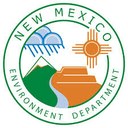
Visit the NMED Drinking Water Bureau website at http://www.nmenv.state.nm.us/dwb/index.htm for more information, or call 877-654-8720 Monday - Friday, 8-5, or contact Tom Skibiski at thomas.skibiski@state.nm.us or at 505-827-1758. Click here to find out more about this program and what to do about floodwater contaminated wells (which can occur after a wildfire, flooding or other emergency).
General Forest Restoration Assistance
What is it? The NM State Forestry Division can assist landowners in working with other governmental organizations to find and secure necessary tools and funding to stabilize and restore their burned properties and watersheds. This can include advisement, planning assistance, and project design to help the applicant find the resources needed to complete restoration and stabilization projects.
Who Can Apply? There are no dedicated funds for this program, but NM State Forestry can offer assistance to both individuals and communities. There is no timeline for application as assistance is available as per the scope of work of the Division (depending on staff resources and availability).
Are Matching Funds Required?: Yes, as NM Forestry has no dedicated funds for assistance.
When Can I Expect To Receive My Funds?: Technical assistance is always available as per scope of work of the Division, but deadlines depend on the program that best fits the applicant's goals and objectives. Timing varies.
Contact Name: Doug Boykin
Contact Phone Number: 575-835-9359 for Doug, or contact the main State Forestry Office in Santa Fe at 505-476-3325
Contact Email: doug.boykin@state.nm.us
Program Website: http://www.emnrd.state.nm.us/SFD/
American Red Cross
Help for Businesses and Nonprofits
What is it? If your business or non-profit organization – regardless of size –is located in the declared disaster area (the declaration may be either Presidential or a SBA administrative declaration; it is worth checking in with them), you may apply for a long-term, low-interest loan to repair or replace damaged property. Even if your property was not damaged and you are a small business owner or a private, nonprofit organization, you may apply for a working capital loan from the SBA to relieve the economic injury caused by the disaster. The SBA may refinance mortgages in some cases.
Who Can Apply? Businesses and nonprofits within the parameters explained in the paragraph above.
Are Matching Funds Required? No
When Can I Expect To Receive My Funds? The sooner you return the completed loan application, the sooner the SBA can process it. The SBA tries to make a decision within 18 days. Make sure the application is complete. Missing information is a major cause of delays.
Contact Phone Number: 800-659-2955
Contact Email: disastercustomerservice@sba.gov
Program Website: http://www.sba.gov/category/navigation-structure/loans-grants/small-business-loans/disaster-loans
Help for Renters and Homeowners
What is it? The SBA provides low-interest disaster loans with long-term repayments to qualifying individuals and businesses. If you are in a declared disaster area (the declaration may be either Presidential or a SBA administrative declaration; it is worth checking in with them) and are the victim of a disaster, you may be eligible for a low-interest rate disaster loan from the U.S. Small Business Administration. Renters and homeowners alike may borrow up to $40,000 to repair or replace clothing, furniture, cars or appliances destroyed during a disaster. Homeowners may apply for up to $200,000 to repair or replace their primary residence to pre-disaster condition.
Who Can Apply? Individuals in a declared disaster area that are the victim of a disaster are eligible to apply. The funds cannot be used for barns, crops, fencing etc; but just for the items described in the summary above. SBA can approve a loan for the total replacement cost up to their lending limits; you do not need to wait for an insurance settlement before applying. Once your insurance settles, if there is a duplication of benefits, we will apply those funds to the balance of your disaster loan.
Are Matching Funds Required?: No
When Can I Expect To Receive My Funds?: The SBA disaster assistance program helps with long-term, low-interest rebuilding and repair of damaged property, unlike immediate emergency relief provided by relief organizations. To make a loan, they must know the repair cost, be assured that you can repay the loan, and take reasonable safeguards to make sure the loan is repaid. The sooner you return the completed loan application, the sooner SBA can process the application. SBA tries to make a decision on each application within 14 days. Make sure the application is complete, since missing information is a major cause of delays.
Contact Phone Number: Disaster Loans: 800-659-2955
Contact Email: disastercustomerservice@sba.gov
Program Website: Visit website
The Salvation Army
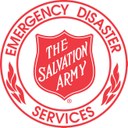
For information on services provided by The Salvation Army, click here. For Salvation Army locations and phone numbers in New Mexico, click here.
Self Help, Inc.

Self Help enhances life skills and empowers individuals by providing programs and services that focus on developing self-reliance. Self Help provides consultation and advocacy, emergency financial assistance and seed money grants to residents of Los Alamos, northern Santa Fe, Rio Arriba, and Taos counties. Each year, through grants and private and public contributions, Self Help is able to support those who need help most during emergencies. Click here to learn more or call 505-662-4666.
Helping Children Cope with Disaster

Visit www.fema.gov or get a copy of FEMA 478 Helping Children Cope with Disaster. To obtain this or other publications call the FEMA publications warehouse at 1-800-480-2520. You can also visit the Department of Homeland Securities’ www.ready.gov.http://www.fema.gov/coping-disaster#4.
You may also visit Sesame Street's Handling Emergencies.
Assistance with Natural Disaster Losses: Farm Service Agency

The Farm Service Agency’s Livestock Forage Program compensates eligible livestock producers who have suffered grazing losses due to fire and drought.
The Farm Service Agency’s Livestock Indemnity Program provides assistance to producers for livestock deaths that result from disaster.
The Farm Service Agency’s Emergency Assistance for Livestock, Honeybees and Farm-Raised Fish compensates producers for livestock losses from wildfire not adequately covered by any other disaster programs.
The Farm Service Agency’s Emergency Conservation Program provides emergency funding and technical assistance to rehabilitate farmland damaged by natural disasters.
The Farm Service Agency manages an Emergency Forest Restoration Program to help owners of non-industrial private forest land restore land damaged by wildfire.
Contact: For more information, visit the FSA website on disaster assistance here or call 505-761-4900. To find an FSA Service Center near you, click here.
Food Assistance

The Human Services Department will also help with applications for SNAP assistance. If you are not part of the SNAP program but need assistance, FEMA or Red Cross may be able to help in disaster declared areas, in addition to local food banks and pantries. You can also apply for SNAP benefits online. An expedited SNAP program exists to provide benefits within 7 days.
For more information, call 1-800-283-4465 or click here.
New Mexico Burned Area Initiative
The Environmental Quality Incentives Program (EQIP) provides financial and technical assistance to agricultural producers in order to address natural resource concerns and deliver environmental benefits such as improved water and air quality, conserved ground and surface water, reduced soil erosion and sedimentation or improved or created wildlife habitat.
Additional information is available here.
Contact: Please contact the District Conservationist in the USDA Service Center nearest the location of your property, or:
Kristin Graham Chavez
Assistant State Conservationist for Programs
505-761-4404
E-mail: kristin.grahamchavez@nm.usda.gov
2-1-1 Free Information and Referral Center

2-1-1 of Central New Mexico: United Way 2-1-1 provides free information and referrals to health and human services, government agencies, and community based organizations. United Way 2-1-1 is a comprehensive source for information, better connecting our community and increasing self-sufficiency. If you would like help finding resources, it’s easy! Dial Toll Free 2-1-1 or (505) 245-1735 to speak to a specialist. Calls answered 7 days a week, 8AM to Midnight, 365 days a year. Or access information in our online searchable database. See more at: http://www.uwcnm.org/211#sthash.ocDQiYJQ.dpuf
2-1-1 of Eastern New Mexico: Are you facing difficult times and don’t know where to turn? Are you looking for help with everyday needs? Do you want to volunteer? Dialing 2-1-1 is your first step. 2-1-1 is a free, easy to remember number to dial for information about health and human service organizations in your community. By dialing 2-1-1, information is much easier to find.To find resources available to residents of Curry County and Roosevelt County, New Mexico, enter information about the person needing services. See more at: https://www.unitedwayenm.org/211-info-helpline.
2-1-1 of Northern New Mexico: This is northern New Mexico's free Information and Referral Center connecting residents to community resources located in their area. When callers dial 2-1-1, they are connected to a trained individual who, using compassion and skill, takes time to asses the caller’s specific needs. Individuals can also access 2-1-1 Northern New Mexico’s database of community resources via the internet at referweb.net/unnm anytime. 2-1-1 Northern New Mexico began taking calls in June 2012, and 2013 marked its first full year in business. This region serves six counties: Los Alamos, Rio Arriba, Santa Fe, Mora, Taos, and San Miguel.
For Emergency Shelter, Food and Other Necessities
American Red Cross
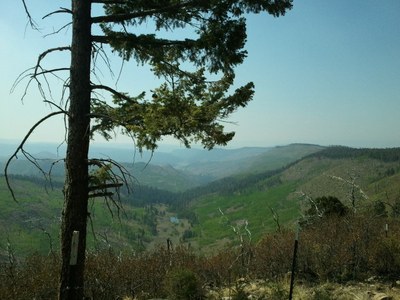
The American Red Cross responds to disasters 365 days a year to assist impacted individuals with their immediate emergency needs. Contact the Red Cross here. Call 1-800-RED CROSS (1-800-733-2767) and ask for your local chapter.
Food Assistance
The SNAP (Supplemental Nutrition Assistance Program) may help you replace food lost in a disaster or help you apply for benefits through the NM Human Service Department. You can apply for SNAP benefits online. An expedited SNAP program for disasters exists to provide benefits within 7 days. For more information, call 1-800-283-4465 or click here.
Community, Faith-Based and Volunteer Groups
Local Community and Faith Based Organizations and Volunteer Groups may also offer disaster relief services. Groups such as the County Disaster or Emergency Services Offices often coordinate services provided by local groups. Attend a local wildfire information community meeting or call local churches, community groups, etc. to find out more.
Additional Assistance
Visit our Who Can Help section for more opportunities for assistance.
Emotional Support and Wildfire
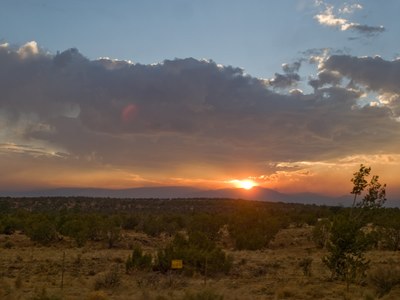 Wildfires often lead to emotional distress in those that experience them. Survivors living in the impacted areas (including children and teens), loved ones of victims, first responders, and rescue and recovery workers are all at risk.
Wildfires often lead to emotional distress in those that experience them. Survivors living in the impacted areas (including children and teens), loved ones of victims, first responders, and rescue and recovery workers are all at risk.
Feelings such as overwhelming anxiety, constant worrying, trouble sleeping and other depression-like symptoms are common responses (before, during and after the event). Most people need additional support to cope and move forward on the path of recovery. (Text adapted from the Disaster Distress Helpline wildfire page).
Agora Crisis Center
Agora, based out of the University of New Mexico, is a place that anyone can call when they have something to say or just need someone to listen. You don't have to be in crisis, you can call to talk about good things, bad things, stress, anger, or loneliness. Call (505) 277-3013 or 866-HELP-1-NM (866-435-7166). Agora can also chat online with you.
Crisis Center of Northern New Mexico
Visit http://crisis-centers.com/contact_us/ or call 1 800-206-1656, a 24-hour crisis line.
New Mexico Crisis and Access Line
Visit http://www.nmcrisisline.com or call 1 (855) NMCRISIS (662-7474).
The Disaster Distress Helpline
The Disaster Distress Helpline provides year-round, 24/7 phone- and text-based crisis counseling to anyone who is experiencing emotional distress related to natural or man-made disasters within the U.S. and territories. Those impacted by recent wildfires and might be experiencing distress and having difficulty coping can reach out to them any time for support. Call 1-800-985-5990, or text Text TalkWithUs to 66746 or Hablanos to 66746.
Firefighters and First Responders
Firefighters, agency personnel, and first responders may use all of the resources above; however, there are also resources specific to these groups:
- First Responder 24-Hour Crisis Hotline, 1-888-731-3473 (FIRE)
- Firefighter Behavioral Health Alliance, www.ffbha.org
- National Fallen Firefighter Foundation, www.firehero.org
- Wildland Firefighter Foundation www.wffoundation.org provides help to families of firefighters killed in the line of duty and assists injured firefighters and their families.
- The Life Challenge Program, www.lifechallengeprogram.org, provides information about suicide awareness for firefighters.
- Quick Series Publishing, www.quickseries.com, 1-800-361-4653, provides pocket books and eGuides for fire fighters, EMS and more.
Other Resources for Emotional Support
- Helping children deal with disaster, visit www.fema.gov or get a copy of FEMA 478 Helping Children Cope with Disaster. To obtain this and other fact sheets and publications call the FEMA publications warehouse at 1-800-480-2520. You can also visit the Department of Homeland Securities’ www.ready.gov, or the National Child Traumatic Stress Network.
- New Mexico Suicide Prevention Coalition, 1-855-662-7474, www.nmsuicideprevention.org.
- ACROSS = Association of Christians Reaching Our in Service and Support www.acrossweb.us.
Emotional Phases of Disaster
People may experience an emotional "high" after a disaster, due to survival and communities coming together. The emotional "lows" may come later, and be triggered months or years after the event. For a chart and an interesting article on this, please visit the OperationSAFE website here.
Caring For Your Pets and Livestock After Wildfire
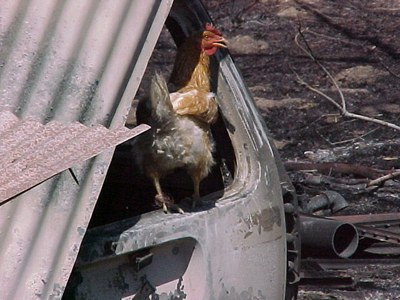 In addition to affecting your health and safety, wildfire also poses a threat to pets and livestock. Unfortunately disasters can mean that animals are left behind. This section offers some resources and precautions related to pets and livestock. See our Immediate Safety section for general safety information.
In addition to affecting your health and safety, wildfire also poses a threat to pets and livestock. Unfortunately disasters can mean that animals are left behind. This section offers some resources and precautions related to pets and livestock. See our Immediate Safety section for general safety information.
Pets
-
The accepted sequence for safety and evacuation is people first, then pets, then livestock, and then property. The same can be said of disaster recovery.
-
First and foremost: Stay away from your home or business until fire officials tell you it is safe to return.
-
Make sure your pet has some kind of identification, ideally a collar with a tag that has your contact information on it. Microchips also help; make sure you have at least one non-local contact person listed on your pet's chip registration in case local phones are out.
-
Whenever possible, do not leave animals behind. They can be lost, injured or killed.
-
Human evacuation shelters generally do not allow pets except for service animals.
-
Pet evacuation shelters are often available. To find out more about the location of shelters and other services available to pet owners, call Animal Protection of New Mexico at 505-265-2322 Ext. 29.
Livestock
-
The health and safety of livestock is primarily the responsibility of the owner.
-
Evacuation centers for livestock are usually located at country fairgrounds. Call your county emergency manager or the livestock board to find out more about these facilities.
-
Adrenaline, panic and confusion affect both humans and animals, so be aware of these effects.
-
Use caution when working with livestock after a wildfire. Their survival instincts can make normal handling techniques ineffective. Livestock are very sensitive to wildfire and will respond to a fire that is anywhere within their sensory range. Normal reactions range from nervousness to panic to aggressive escape attempts.
-
Livestock are often injured or killed by fleeing from a wildfire into fences and barriers. Be sure to check your animals for injuries from fences and to check your fences for damage from fleeing animals.
-
Report location, identification and disposition of your livestock to the authorities responding to the fire, especially if your animals are aggressive.
-
After you have been allowed to return to your property, it is important to locate your livestock and ensure they have access to high-quality forage with a protein and mineral supplement and good water. If livestock do not get adequate nutrition, their condition can deteriorate rapidly.
-
Check surviving livestock for signs of injury. Health disorders such as burned eyes, burned areas, and lung inflammation and edema from smoke inhalation are common after livestock experience wildfire. Have your livestock inspected by a vet as soon as possible. It can take a while for symptoms to appear, so monitor your cattle for several weeks after the fire.
-
After wildfire, be sure your livestock are pastured somewhere safe from flash floods and post-fire flooding, if possible.
-
Livestock have a natural instinct to move away from flash flood waters, and will generally seek higher ground if they can. Livestock will initially panic during flash floods and will fight fences if they are impeding their movement away from floodwaters. Be sure your pasture is fenced in a way that maximizes access to high ground to minimize injury and death.
-
The New Mexico Livestock Board and its partners assist in evacuations and work to make sure any livestock that had to be evacuated during a fire are claimed by their owners.
-
In the event of livestock fatalities, contact the State Livestock Board at 505-841-6161 to find out about disposal methods.
-
For additional information on assistance offered by the Livestock Board, call 505-841-6161.
-
The State Veterinarian, Ellen Wilson, DVM, can be reached at 505-841-6161 or through email at Ellen.Wilson@state.nm.us.